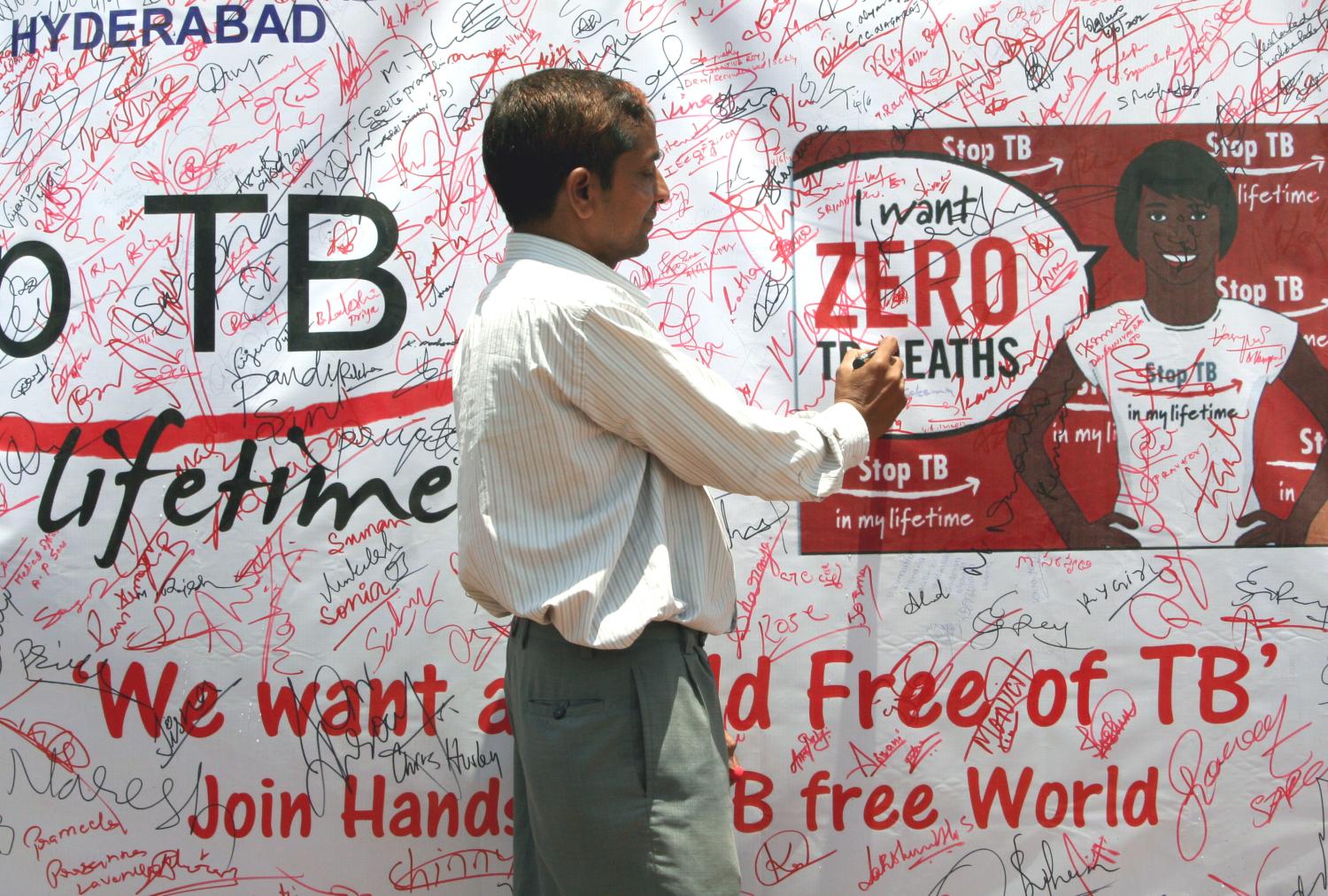World Health Organization (WHO) officials say they're seeing some encouraging trends in the global tuberculosis (TB) picture. But the world remains far from meeting targets for eliminating the disease.
In its latest Global Tuberculosis Report, released today, the WHO reported that 7.5 million people were newly diagnosed with TB in 2022, the highest number since the WHO began recording TB statistics in 1995. That number is significant because it means more people with TB are being officially diagnosed and getting the treatment and services they need.
The number of people diagnosed with TB globally had been steadily climbing until the COVID-19 pandemic hit in 2020. But the combination of pandemic lockdowns and the shifting of health resources to the COVID response resulted in a dramatic decline in new TB diagnoses in several of the countries with the highest TB burden. Only 5.8 million were newly diagnosed with TB in 2020. The WHO estimates that some of the newly diagnosed TB patients in 2022 may include people who developed TB in previous years.
WHO officials say it's a sign that essential TB services are recovering from the pandemic in many countries, and fewer people with the illness are being left behind.
"This has started to reverse or moderate the damaging impact of the pandemic on the number of people dying from, or falling ill with TB," WHO Global TB Programme Director Tereza Kasaeva, MD, PhD, said at a press briefing this morning.
Pandemic limited access to essential TB services
Still, the recovery from the impact of the pandemic remains slow. Overall, the WHO estimates that 10.6 million people in 192 countries developed TB in 2022, up from 10.3 million in 2021. That's the second straight year of increases in TB incidence, following nearly two decades of declines. But the gap between the estimated number of people developing TB and the reported number of people newly diagnosed with TB fell to 3.1 million, down from around 4 million in 2020 and 2021.
TB deaths, meanwhile, fell from 1.4 million in 2020 and 2021 to 1.3 million in 2022 but remain above prepandemic levels. The number of TB deaths climbed during the pandemic, with COVID disruptions and limited access to TB services resulting in an estimated half a million more TB deaths from 2020 to 2022 than would have been expected based on prepandemic trends, according to the report.
TB remains the second leading cause of death from a single infectious agent, after COVID-19, and is the leading killer of people with HIV.
Cheri Vincent, MPH, head of the TB division at the US Agency for International Development, the largest bilateral donor to TB funding efforts, said the toll of the pandemic on TB services and patients over the past 3 years highlights why the increase in the number of people getting diagnosed and treated is so significant.
"People with TB suffered more than ever," Vincent said. "Access to diagnosis and treatment, as WHO data has shown, was at its all-time low."
The uptick in the number of newly diagnosed TB patients was particularly notable in India, Indonesia, and the Philippines, which are three of the top four highest TB-burden countries and collectively accounted for 60% of the reduction in TB notifications in 2020 and 2021.
But many challenges remain. While the new, shorter drug regimens have improved treatment success rates for multidrug-resistant (MDR)-TB, only 175,650 of the estimated 410,000 people who developed MDR or rifampicin-resistant TB in 2022—roughly 2 in 5—were diagnosed and started on treatment.
"Multidrug-resistant tuberculosis remains a public health crisis," Kasaeva said.
In addition, countries have fallen behind in efforts to meet global TB targets. For instance, the 8.7% net reduction in global TB incidence from 2015 to 2022 is well below the WHO End TB Strategy milestone of a 50% reduction by 2025. And the 34 million people treated for TB from 2018 to 2022 represents only 84% of the 40 million targeted for that period at the 2016 United Nations (UN) high-level meeting on TB.
Furthermore, funding for provision of TB diagnosis, treatment, and prevention services remains far below what is needed. A total of $5.8 billion was available in 2022, but the target set by the UN was $13 billion per year.
If we can meet the TB investment goals set by the UN, and if we can secure global commitment and collaboration, we can get back on track to end TB once and for all.
The WHO report also notes that roughly 50% of TB patients and their households face "catastrophic costs," a combination of direct medical expenditures and indirect costs such as income loss representing more than 20% of annual household income.
Handaa Enkh-Amgalan, a TB survivor from Mongolia who spoke at the press briefing, used her personal experience to explain how these costs contribute to the "poverty cycle" seen in many of the low- and middle-income countries with a high TB burden, in which people affected by TB are made poor, and the poor are at increased risk of contracting TB.
"My mom and I faced a tough choice to make," she said. "It was down to either affording bread for the night for me and my siblings or going to a TB clinic to have an x-ray done for diagnosis."
Closing the funding gaps
But Kasaeva and other stakeholders are hopeful that meeting the new 5-year targets set by world leaders at the September 2023 UN high-level meeting on TB will bring countries closer to the ultimate goal of "ending" TB by 2030—defined by the WHO and the UN as reducing TB deaths by 90% and TB incidence by 80% (compared with 2015 levels).
Those targets include treating 90% of diagnosed TB patients, reaching 90% of those who need TB preventive treatment, licensing at least one new TB vaccine, using a WHO-recommended rapid test as the first method for diagnosing TB, providing a health and social benefit package for all people with TB, and closing the funding gaps for TB implementation and research by 2027.
Mel Spigelman, MD, president and CEO of the nonprofit TB Alliance, said meeting the 2027 investment goal of $22 billion a year for global TB efforts, with an additional $5 billion annually for research, will be critical.
"With sufficient investment, eradicating TB is possible," Spigelman said in a statement. "If we can meet the TB investment goals set by the UN, and if we can secure global commitment and collaboration, we can get back on track to end TB once and for all."























